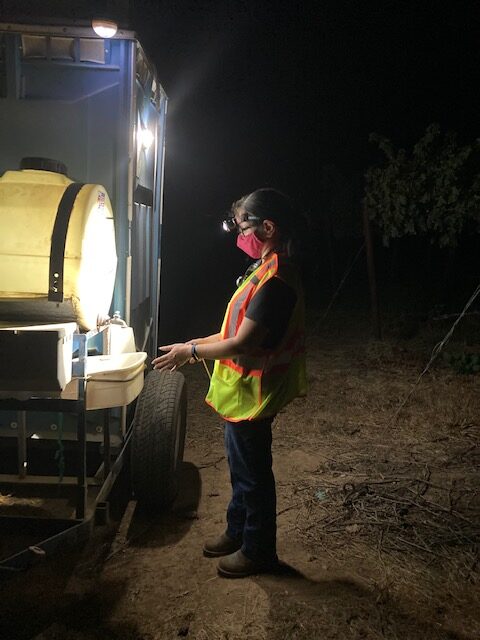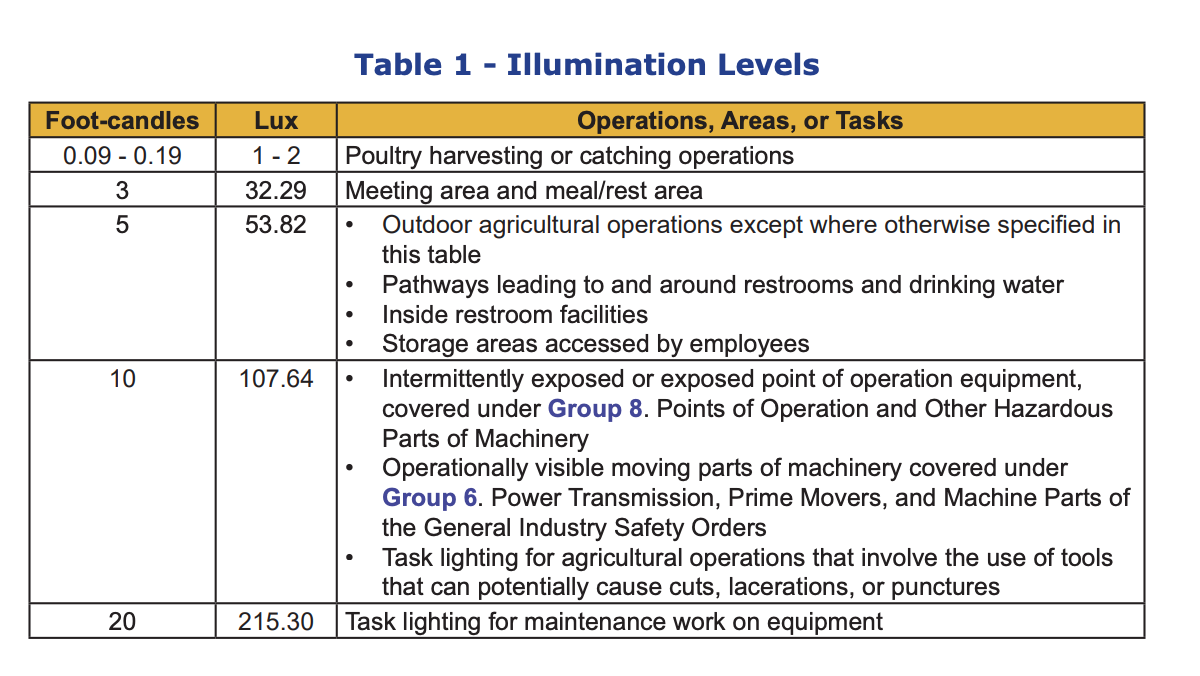
During the hot summer (and early fall) months, nut growers, farm managers and their crews aim to start work before the sun comes up and save additional tasks for after sunset in order to beat the heat. While some level of additional lighting has been the norm during those early morning/late evening hours, as of July 2020, the State of California began enforcing a regulation that specifically governs how much lighting is required and the kinds of reflective clothing needed to protect anyone working at night in an agricultural environment.
The Outdoor Agricultural Operations During Hours of Darkness standard was developed by the California Division of Occupational Safety and Health (Cal/OSHA) with input from multiple ag industries, including nut growers.
There are three specific areas within the rule that growers must be aware of:
- Lighting
- Personal protective equipment
- Training
While there is not a specific instance of a nighttime worker being injured on the job in the nut industry, there are instances of employees being hurt in other ag sectors by trucks and other equipment, which inspired the creation of the rules. As such, it’s imperative that growers and applicators not only understand the regulation, but also put a plan in place to follow them, a plan that takes into consideration the required trainings and, at its core, prioritizes employee safety.
Lighting Requirements
The rule includes a matrix detailing how much lighting is mandated depending upon the task. Lighting is measured in candle feet, which defines the amount of light in a 360-degree circle from where someone is working. Cal/OSHA specifies that light measurements are recorded 30 inches off the ground.
For growers and applicators, some jobs may require 10 candle feet of light while some maintenance duties may specify 20 candle feet of light.
Lighting can be provided through a combination of stationary lights brought into an orchard, headlights on vehicles and personal lighting such as headlamps on hard hats.
It is highly recommended that you invest in a light meter and ensure the steps you’ve taken to mitigate this risk are working. Cal/OSHA has approved the use of light meters provided by three different companies: Davis, SPER and Extech.
Reflective Clothing
The rule also requires growers to provide workers with any personal protective equipment they need when working at night. Such equipment may include hardhats with lamps or Class 2 high visibility reflective clothing such as shirts, vests and jackets.
Ensure to equip your employees with the correct PPEs as they work during hours of darkness.
Any vehicles that will be used at night, such as trucks, tractors, forklifts, sweepers, ATVs and UTVs, must have proper headlights and taillights.

Nightly Safety Training
Training is a major component of the nighttime regulations. Before each work shift begins, employers are required to ensure that employees know where drinking water is stationed; what areas are designated for hand washing, rest and meal breaks, and parking; and what hazards exist (canals, irrigation equipment, roads and areas where trucks and equipment might be as well as their traffic patterns.)
Cal/OSHA has the authority to make unannounced inspections of workplaces to see if the new regulations are being followed. Fines start at a few hundred dollars per violation per worker per shift, meaning they could add up quickly for growers out of compliance.
To help growers understand and comply with this new rule, AgSafe created a training video that is available on their website. Also on their site, AgSafe provides growers with forms they can use to document which employees worked each night, when their shifts began and ended, and what tasks they performed. Growers with further questions should contact Angelina Ceja at Angelina@agsafe.org or (209) 526-4400, ext. 404.
AgSafe is a 501c3 nonprofit providing training, education, outreach and tools in the areas of safety, labor relations, pesticide compliance and human resources for the agricultural community. Since 1991, AgSafe has educated over 100,000 employers, supervisors and workers about these critical issues.










